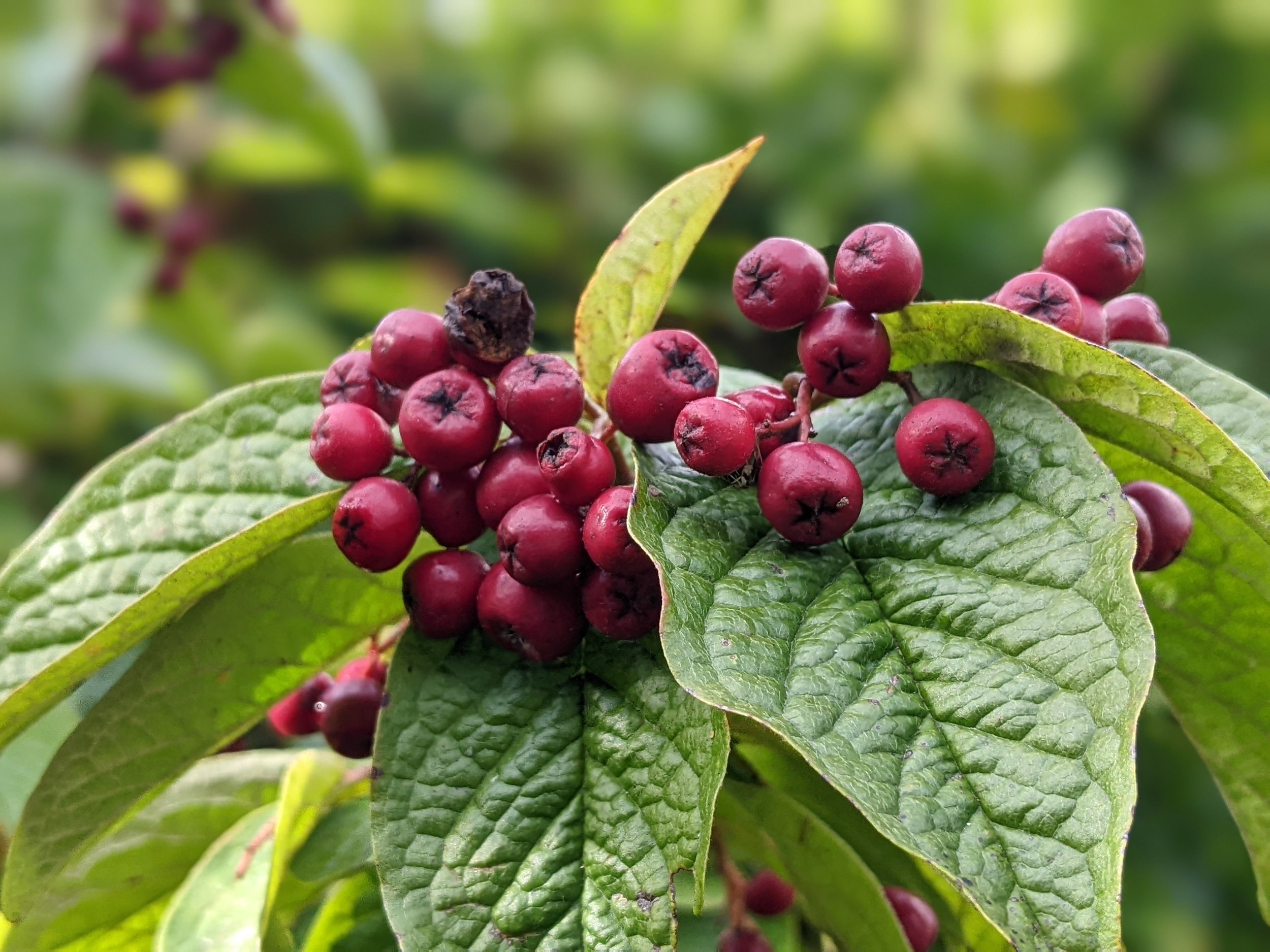The year is marching on at an alarming speed, bonfire night is less than a week away with its wood smoke smells, loud bangs and for me an internal conflict between what’s best for wildlife in general, hedgehogs in particular and the sheer splendour of our town’s annual firework display.
It usually also comes with the first really cold hands and feet of the season and the first outing of warm gloves and thick welly socks. But my garden seems very behind this year, the Acer palmatum is only now blushing scarlet, as if embarrassed by being late to recognise its seasonal obligation.
The big old hornbeam next door is just on the verge of yellowing and although the sumach, Cornus mas and rowan tree are doing their usual flaming bonfire impressions, the cotoneasters and hollies have not yet lost a single berry to the birds and most of the garden remains stubbornly green, as if still undecided and teetering on the edge of autumn.
Perhaps nagging climate anxiety is causing me to worry unnecessarily, but I do hope my garden’s wild creatures have a better grasp of what’s going on than I do and that their body clocks are keeping pace.
As our climate changes, plants’ flowering and fruiting times affect every creature which has evolved and adapted to live with their provision of food and have arranged their life cycles to suit. When the timing goes awry, it’s called a phenological mismatch and can have devastating consequences to both.
During the summer we can help in small ways, like encouraging Buddleja by trimming its tips to keep producing flowers for the later butterflies,. Sowing annual seed at different times to stagger when different shaped flowers appear for the different designs of foraging insect tongue types.
I don’t weed, so all the lovely native species can flower where and when they see fit to extend the provision of food, and now at the end of the year, there is something else we can do, or more importantly, not do.
Much to my husband’s displeasure, our garden remains untamed and untidy, just as wildlife likes it to be. His human desire for neatness and order is shared by most gardeners in their traditional autumn tidy up, but it’s anathema to nature which has known how to survive the long nights and cold, wet and windy winter weather for many millenia longer than we have.
I like to let nature be herself, when spring comes around we can be more usefully involved again. In the meantime, in my garden the windfall apples lie ready for invertebrates to feed on, the teasel and sunflower heads are full of seed, the hawthorn, wild rose and bay are ready when the birds are, and the ivy berries are now setting and will ripen for a late winter treat.
Leaf litter is beginning to accumulate and as it swirls around and the drifts grow, they’ll stay where the wind takes them and cover the soil in a protective blanket. Hollow stems and spent flower heads stand where they grew and where the overwintering insects now hiding in there found them.
Around the pond the grasses wave their delicate seeds in the wind in invitation, hopefully they won’t fall before the birds feel ready to eat them. But there I go worrying again, if they do, then they will germinate, grow and flower in their turn, all the more grasses and seed for future winters’ birds to eat.
The best thing about my wild garden is that nature is in charge and when the dark clouds loom, there’s always a silver lining, for its wildlife and for me too.







